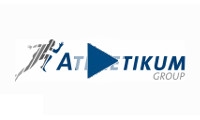ATHLETIKUM Group
Sports traumatology for sporting injuries
Sport is becoming an increasingly important aspect of our modern-day lives. And so too is sports traumatology. This is partly due to the fact that we have more leisure time, and that we fill our time with more active pursuits. But our biological age limit for sporting activities is also shifting.
The causes of sporting injuries are many in number and vary, depending on the type of sport involved. In addition to acute injuries, sports traumatologists are seeing more and more excessive strain-related damage in their practices.
In many types of sport, the limits of sporting ability are determined by the ability of the connective and supporting tissue to cope with stress. If the actual stress is greater than the tissues' individual capacity to handle it, chronic micro-traumatisation occurs. This is known as overloading of the supportive and connective tissue.
Athletes perceive this excessive strain as muscle or tendon inflammation and as joint pain. If chronic excessive or inappropriate stress is not recognised in good time, subjected to functional analysis and treated adequately, it can lead to irreversible joint or soft tissue damage.
The role of the sports traumatologist therefore involves diagnosing sport-specific patterns of injury or excessive strain damage promptly and providing targeted treatment. Team work between the doctor, physiotherapist and athlete is important for achieving a smooth transition towards low-risk full weight-bearing in sport-specific training and in competitions.
Prophylaxis and prevention in sports medicine is also one of the key tasks of sports traumatology. For athletes of a young age especially, the sports traumatologist can lay the foundations early on for a non-traumatic, low-injury and healthy future.





